How to Manage Finances as a Hairstylist
Reading Time: 16 minutesUnlock Financial Success in the Hair Industry
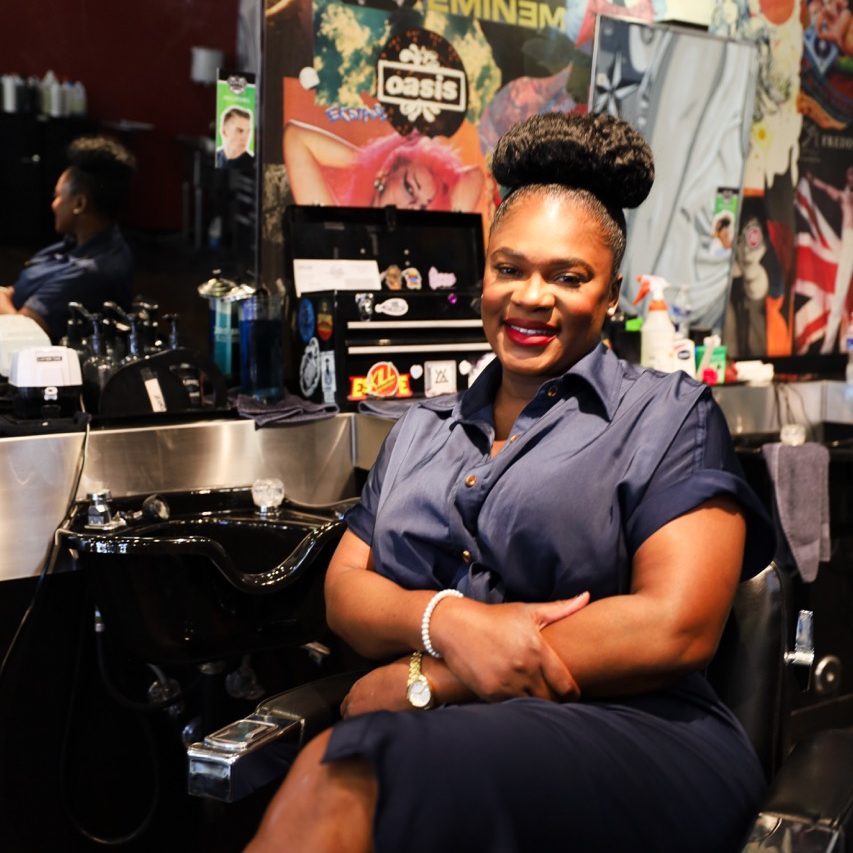
As a hair stylist, your passion lies in creating stunning looks and making clients feel their best. However, it’s equally important to have a solid understanding of financial management to ensure the success and stability of your career. Managing finances effectively not only helps you stay on top of your income and expenses but also enables you to plan for the future and achieve your financial goals. In this blog, we will explore essential tips and strategies to help you manage your finances as a hairstylist.
Set Financial Goals
Setting financial goals is a crucial step in managing your finances as a hairstylist. Here are some key points to elaborate on:
Define Specific Goals: When setting financial goals, it’s important to be specific and clear about what you want to achieve. For example, your goals could include saving a certain amount of money, paying off a specific debt, or investing in further education or training. The more specific your goals, the easier it becomes to develop a plan to achieve them.
Make Your Goals Measurable: It’s essential to set measurable goals that can be tracked and evaluated. For instance, instead of saying, “I want to save more money,” specify an exact amount or percentage of your income that you aim to save each month. This allows you to monitor your progress and make adjustments if needed.
Set Realistic Timeframes: Consider the timeframes in which you want to achieve your goals. Short-term goals might focus on immediate financial priorities, such as building an emergency fund within the next six months. Long-term goals can involve saving for retirement or starting your own salon within a specific number of years. Ensure that your timeframes are realistic and attainable.
Prioritize Your Goals: If you have multiple financial goals, prioritize them based on their importance and urgency. Determine which goals require immediate attention and allocate resources accordingly. This helps you stay focused and ensures that you’re actively working towards the most critical objectives.
Break Down Your Goals: Sometimes, large financial goals can feel overwhelming. To make them more manageable, break them down into smaller, actionable steps. For example, if your goal is to save a significant amount of money, determine how much you need to save each month and identify areas where you can cut expenses to reach that target.
Regularly Review and Adjust: Financial goals are not set in stone. It’s important to review your progress regularly and make adjustments as needed. As your circumstances change or unexpected expenses arise, you may need to reassess your goals and make necessary modifications. Regular reviews also help you stay motivated and celebrate milestones along the way.
Celebrate Your Achievements: When you reach a financial goal, take the time to celebrate your achievements. Acknowledge your hard work and discipline, and reward yourself for your dedication. Celebrating milestones not only boosts your confidence but also reinforces positive financial habits and encourages you to set new goals.
By setting clear, measurable, and realistic financial goals, you establish a roadmap for your financial success as a hairstylist. These goals provide direction, focus, and motivation, helping you make informed financial decisions and achieve financial stability and growth. Remember to review and adjust your goals regularly to ensure they align with your evolving needs and aspirations.

Create a Budget
Creating a budget is an essential step in managing your finances as a hairstylist. Here are some points to elaborate on:
Track Your Income and Expenses: Begin by tracking your income from salon services, tips, and any other sources. Make sure to include both your regular income and any irregular or variable income. Next, track your expenses, including rent, utilities, supplies, marketing, insurance, professional dues, and personal expenses such as groceries, transportation, and entertainment. Gathering this information will give you a clear understanding of your financial inflows and outflows.
Categorize Your Expenses: Categorizing your expenses helps you identify where your money is going and enables better financial management. Common expense categories for hair stylists may include rent or lease payments, product and tool expenses, marketing and advertising costs, professional development and education, insurance premiums, and taxes. Categorizing your expenses will allow you to see the proportion of your income that goes into each category.
Identify Essential and Non-Essential Expenses: Differentiate between essential and non-essential expenses. Essential expenses are those necessary for your business and personal well-being, such as rent, utilities, and supplies. Non-essential expenses are discretionary and can be adjusted or eliminated if needed. Analyzing your expenses will help you identify areas where you can potentially reduce costs and save money.
Set Realistic Spending Limits: Once you have a clear understanding of your income and expenses, set realistic spending limits for each category. Allocate a specific portion of your income to each expense category based on its priority and importance. Be mindful of not overspending and ensure that your income covers all your expenses.
Plan for Variable and Irregular Expenses: As a hair stylist, you may encounter variable and irregular expenses, such as replenishing your product inventory or attending industry events. Account for these expenses by setting aside a portion of your income each month to build a buffer for such costs. This way, you won’t be caught off guard when these expenses arise.
Review and Adjust Regularly: A budget is not a one-time task. Review your budget regularly, such as monthly or quarterly, to ensure that it remains accurate and aligned with your financial goals. Take note of any changes in your income or expenses and make necessary adjustments. If you consistently exceed or underspend in certain categories, consider reallocating funds to balance your budget.
Seek Professional Assistance: If you find budgeting challenging or need expert guidance, consider working with a financial advisor or accountant who specializes in working with self-employed professionals. They can provide valuable insights, help you optimize your budget, and offer advice on tax planning and financial strategies.
Creating and maintaining a budget provides financial discipline and allows you to make informed decisions about your spending, savings, and investments. It gives you a clear overview of your financial situation, helps you track progress toward your financial goals, and enables you to stay on top of your financial responsibilities as a hairstylist.

Separate Personal and Business Finances
Separating personal and business finances is a crucial aspect of managing your finances effectively as a hairstylist. Here are some points to elaborate on:
Establish Separate Bank Accounts: Set up separate bank accounts for your personal and business finances. This separation ensures that your personal expenses and income are distinct from your business transactions. Having separate accounts makes it easier to track your business income and expenses accurately, simplifies tax preparation, and provides a clear picture of your business’s financial health.
Maintain Clear Records: Keep meticulous records of all your business-related transactions. This includes income from salon services, product sales, tips, and any other sources of revenue. Similarly, track your business expenses, such as rent, utilities, supplies, marketing costs, and professional dues. Maintaining clear and organized records helps you monitor your business’s financial performance, claim appropriate tax deductions, and comply with accounting and tax regulations.
Pay Yourself a Salary: To maintain a clear distinction between personal and business finances, establish a regular salary for yourself. Set a reasonable amount that you can withdraw from your business account as your personal income. This ensures that you’re compensating yourself for your work while keeping personal and business finances separate.
Use Separate Payment Methods: Whenever possible, use separate payment methods for personal and business expenses. For personal expenses, use your personal debit or credit card, and for business expenses, use a dedicated business account or business credit card. This practice makes it easier to track and categorize expenses during financial record-keeping.
Avoid Mixing Funds: Avoid using your business account for personal expenses or vice versa. Mixing funds can lead to confusion and complicate your financial management. It may also have legal and tax implications. By keeping your finances separate, you maintain clarity and ensure that your business remains financially stable.
Consult with a Financial Professional: If you’re uncertain about the best practices for separating personal and business finances, consider seeking guidance from a financial professional or accountant. They can provide specific advice based on your circumstances, help you set up the appropriate financial structures, and ensure compliance with legal and tax requirements.
Separating personal and business finances is essential for maintaining financial clarity and stability as a hairstylist. It enables accurate tracking of your business’s financial performance, allows for proper tax reporting, and supports effective financial decision-making. By implementing this practice, you establish a strong foundation for managing your finances and positioning yourself for long-term success.

Save for Taxes
Saving for taxes is a critical aspect of managing your finances as a hairstylist. Here are some points to elaborate on:
Understand Your Tax Obligations: As a self-employed hair stylist, you are responsible for paying both income taxes and self-employment taxes. Familiarize yourself with the tax laws and regulations that apply to your business. Consult with a tax professional or accountant to ensure you have a clear understanding of your tax obligations, including filing deadlines and any deductions or credits you may be eligible for.
Estimate Your Tax Liability: Estimate your tax liability for the year by considering your projected income and deductible expenses. This estimation will give you an idea of the amount you need to set aside for taxes. It’s crucial to be proactive and set aside funds throughout the year rather than being caught off guard by a large tax bill.
Set Up a Separate Tax Savings Account: Create a separate savings account specifically designated for your tax obligations. This account should be separate from your personal and business accounts to avoid any confusion. Each time you receive income, allocate a portion of it to your tax savings account. Aim to save a percentage of your income that aligns with your estimated tax liability.
Automate Your Savings: Make it a habit to automate your tax savings. Set up an automatic transfer from your business account to your tax savings account on a regular basis. This ensures that you consistently set aside funds for taxes and reduces the risk of using that money for other purposes.
Regularly Review and Adjust: Throughout the year, review your income and expenses to ensure that your tax savings remain in line with your actual tax liability. If there are any significant changes in your business, such as an increase in income or changes in deductible expenses, adjust your tax savings accordingly. Regularly reassessing your estimated tax liability helps you stay on track and avoid any surprises when it’s time to file your taxes.
Consult with a Tax Professional: Taxes can be complex, and it’s wise to seek guidance from a tax professional or accountant. They can help you navigate the tax landscape, provide advice on tax planning strategies, and ensure that you are taking advantage of all available deductions and credits. A tax professional can also assist you in properly reporting your income and expenses, minimizing the risk of errors or audits.
By saving for taxes throughout the year, you avoid financial strain and ensure that you can fulfill your tax obligations without difficulty. Developing a disciplined approach to saving for taxes helps you maintain financial stability, stay compliant with tax laws, and avoid penalties or interest charges. Remember, it’s always better to set aside more than you think you’ll need to account for any unforeseen circumstances or changes in your business.
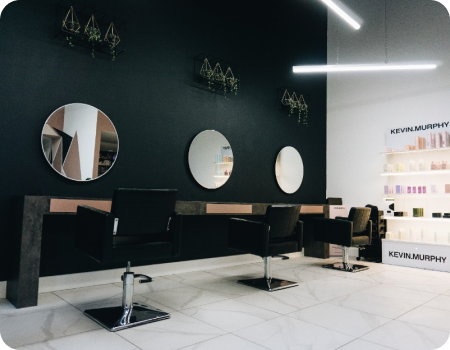
Manage Debt Wisely
Managing debt wisely is crucial for maintaining financial stability and success as a hairstylist. Here are some points to elaborate on:
Understand Your Debt: Begin by assessing your current debt situation. Take stock of all your outstanding loans, credit card balances, and any other financial obligations you have. Understand the terms, interest rates, and repayment schedules associated with each debt. This knowledge will help you prioritize and strategize your debt management.
Create a Repayment Plan: Develop a repayment plan that aligns with your financial goals and resources. Start by prioritizing high-interest debt and focus on paying it off as quickly as possible. Consider the snowball or avalanche method of debt repayment, where you either pay off debts from smallest to largest or focus on debts with the highest interest rates. Choose a strategy that suits your financial situation and motivates you to make progress.
Budget for Debt Payments: Incorporate debt payments into your monthly budget. Allocate a portion of your income specifically for debt repayment. This ensures that you are consistently making payments and reducing your debt load. Adjust your budget and lifestyle as needed to free up more funds for debt repayment.
Negotiate with Creditors: If you are facing financial difficulties or struggling to meet your debt obligations, consider negotiating with your creditors. They may be willing to work out a payment plan or adjust the terms of your debt. Exploring these options can help you manage your debt more effectively and avoid defaulting on your obligations.
Avoid Taking on Unnecessary Debt: Be cautious about taking on new debt unless it is absolutely necessary. Evaluate whether the debt is essential for your business growth or personal well-being. Avoid using credit cards for discretionary purchases unless you can pay off the balance in full each month. By minimizing new debt, you reduce the burden and financial strain on your business.
Seek Professional Advice: If you’re overwhelmed by debt or need guidance on managing your financial obligations, seek advice from a financial advisor or credit counselor. They can help you assess your financial situation, create a debt management plan, and provide strategies for debt reduction. Professional assistance can provide clarity and support as you work towards becoming debt-free.
Develop Healthy Financial Habits: Beyond managing existing debt, it’s essential to develop healthy financial habits. This includes monitoring your expenses, avoiding unnecessary spending, saving for emergencies, and practicing disciplined financial management. Building strong financial habits will help you maintain financial stability, reduce reliance on debt, and create a solid foundation for your business and personal finances.
By managing your debt wisely, you can reduce financial stress, improve your creditworthiness, and create a strong financial foundation as a hairstylist. Prioritize debt repayment, incorporate it into your budget, and seek professional advice when needed. With discipline and perseverance, you can successfully manage and overcome your debt, setting yourself on a path toward financial freedom and prosperity.
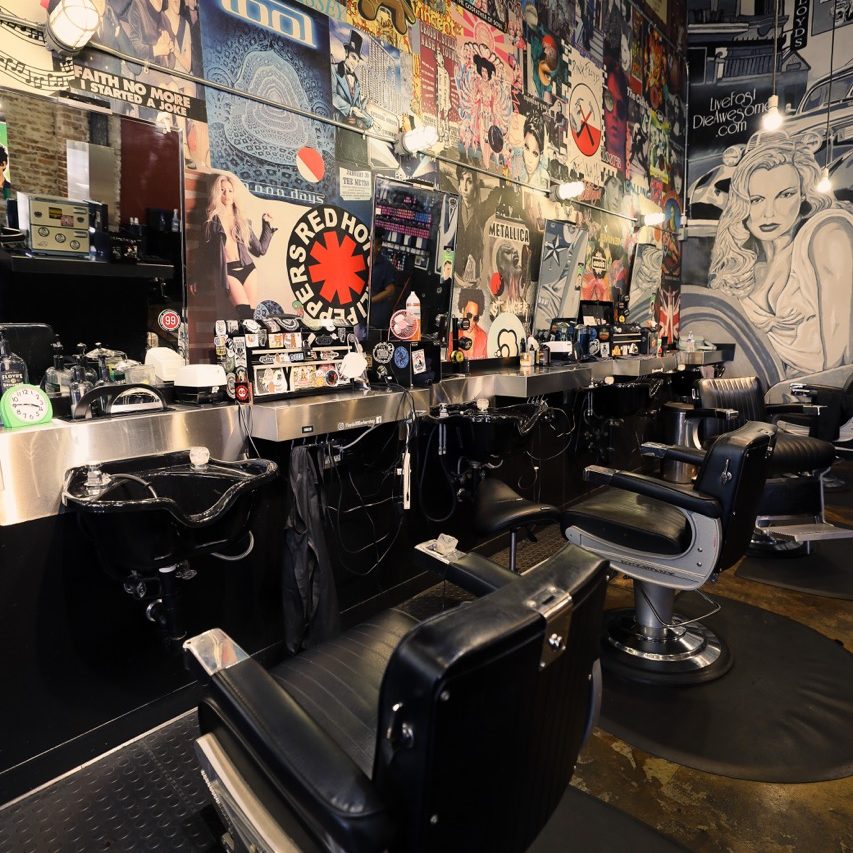
Build an Emergency Fund
Building an emergency fund is a crucial aspect of managing finances as a hairstylist. Here are some points to elaborate on:
Importance of an Emergency Fund: An emergency fund serves as a financial safety net, providing you with a cushion to handle unexpected expenses or financial setbacks. As a hair stylist, your income may fluctuate, and having an emergency fund ensures that you have funds available to cover essential expenses during lean periods or in times of crisis.
Determine Your Target Amount: Start by determining how much you should aim to save in your emergency fund. As a general rule, aim to save at least three to six months’ worth of essential living expenses. Consider your monthly rent or mortgage payments, utility bills, insurance premiums, food expenses, and any other necessary costs. Adjust this target based on your individual circumstances and comfort level.
Prioritize Regular Savings: Make saving for your emergency fund a priority. Treat it as an essential expense and allocate a portion of your income specifically for this purpose. Set up an automatic transfer from your business account or personal account into a separate savings account designated for emergencies. Consistency is key, so commit to regular contributions, even if they are small at first.
Cut Expenses and Increase Income: If you find it challenging to save for your emergency fund, look for ways to reduce your expenses and increase your income. Evaluate your budget and identify areas where you can make cuts or reduce discretionary spending. Additionally, explore opportunities to earn additional income, such as taking on extra clients, offering additional services, or participating in events or collaborations.
Separate Emergency Funds from Other Savings: It’s essential to keep your emergency fund separate from other savings accounts or investments. This separation ensures that the funds are readily available in case of an emergency without affecting your long-term savings goals. Consider keeping the emergency fund in a high-yield savings account or a money market account to earn some interest while maintaining easy access to the funds.
Use it for True Emergencies Only: While having an emergency fund provides a sense of security, it’s important to use it only for true emergencies. Define what constitutes an emergency for you, such as unexpected medical expenses, major car repairs, or loss of income. Avoid dipping into the fund for non-essential expenses or discretionary purchases. Disciplined use of your emergency fund ensures that it remains intact when you truly need it.
Replenish and Maintain the Fund: If you have to use funds from your emergency fund, make it a priority to replenish it as soon as possible. Adjust your budget and savings contributions accordingly to rebuild the fund to its target amount. Regularly reassess your emergency fund needs and adjust the target amount as your financial situation evolves.
Building an emergency fund provides peace of mind and financial security. It protects you from unforeseen circumstances and ensures that you have a financial cushion to rely on during challenging times. By prioritizing regular savings, separating the fund, and using it responsibly, you establish a strong foundation for financial stability and success as a hairstylist.
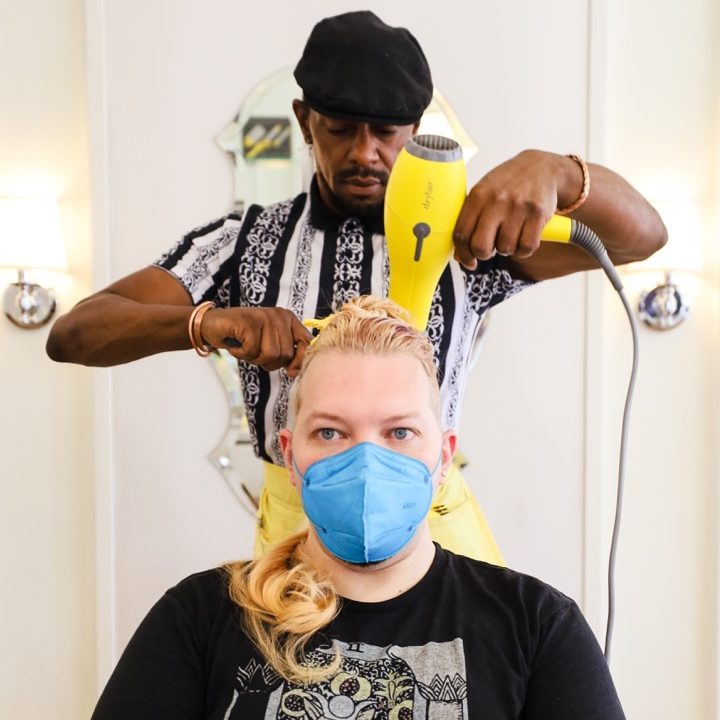
Invest in Professional Development
Investing in professional development is a key aspect of managing your finances as a hairstylist. Here are some points to elaborate on:
Stay Ahead of the Industry: The hair industry is constantly evolving, with new techniques, trends, and technologies emerging regularly. Investing in professional development allows you to stay updated and relevant in the industry. Attend workshops, seminars, conferences, and trade shows to enhance your skills, learn new techniques, and stay informed about the latest industry trends. By staying ahead of the curve, you can attract more clients, offer innovative services, and potentially increase your earning potential.
Enhance Your Skill Set: Professional development opportunities provide a platform to enhance your skill set. Take advantage of advanced training courses, certification programs, and specialized workshops that focus on areas where you want to improve or expand your expertise. This could include hair coloring techniques, precision cutting, hair extensions, or salon management. By investing in your skills, you position yourself as a top-notch professional, capable of delivering exceptional results to your clients.
Expand Your Services: Professional development opens doors to expand your service offerings. By investing in learning new techniques or acquiring additional certifications, you can diversify your skill set and offer a broader range of services. For example, if you specialize in hairstyling, you may consider adding makeup application, bridal styling, or hair treatments to your repertoire. By expanding your service menu, you attract a wider client base and potentially increase your income.
Build Confidence and Credibility: Participating in professional development activities not only enhances your technical skills but also boosts your confidence and credibility as a hairstylist. The more knowledgeable and skilled you become, the more confident you feel in your abilities. Clients are more likely to trust and seek out a stylist who continually invests in their professional growth. Building a reputation for expertise and professionalism helps you attract and retain loyal clients, which can positively impact your bottom line.
Networking and Collaboration: Professional development opportunities provide an excellent platform for networking and collaboration. Interacting with other industry professionals, educators, and experts allows you to build relationships, share experiences, and learn from others. Networking can lead to collaborations, referrals, and potential partnerships that can expand your business opportunities. Building a strong professional network can be invaluable in terms of career growth and business success.
Long-Term Career Development: Investing in professional development demonstrates a commitment to your long-term career development. By continuously learning and evolving, you position yourself for advancement opportunities within the industry. This could include opportunities to work in high-end salons, become a sought-after stylist for fashion shows or editorial work, or even open your own salon. Professional development sets you on a path of continuous growth and opens doors for long-term career success.
Remember, investing in professional development is not just a one-time event but an ongoing commitment to your career. Stay curious, seek out new learning opportunities, and embrace the chance to expand your skills and knowledge. By investing in yourself, you not only enhance your earning potential but also ensure that you remain competitive and fulfilled in your chosen profession.
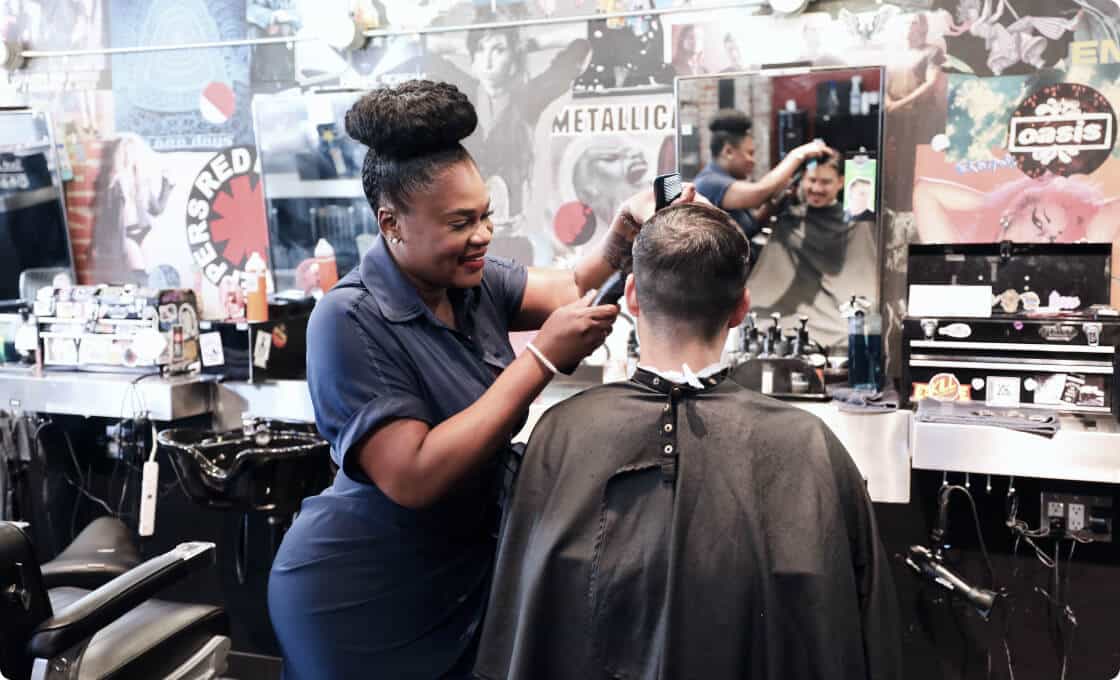
Seek Professional Advice
Seeking professional advice is a crucial aspect of managing your finances as a hairstylist. Here are some points to elaborate on:
Expert Guidance: Financial matters can be complex, and seeking professional advice ensures that you have access to expert guidance. A financial advisor or accountant who specializes in working with small business owners or self-employed professionals can provide valuable insights tailored to your specific financial situation. They can help you understand the nuances of tax obligations, financial planning, and budgeting, allowing you to make informed decisions that align with your goals.
Tax Planning and Compliance: As a hair stylist, navigating the intricacies of tax laws and regulations can be challenging. A professional advisor can assist you in understanding your tax obligations, maximizing deductions, and ensuring compliance with tax laws. They can help you develop a tax planning strategy that minimizes your tax liability while staying within legal boundaries. By seeking professional tax advice, you can potentially reduce your tax burden and avoid costly penalties.
Financial Planning: A financial advisor can help you create a comprehensive financial plan that takes into account your short-term and long-term goals. They can assist you in setting realistic financial targets, creating a budget, managing debt, and planning for retirement. By collaborating with a professional, you can develop a customized plan that aligns with your aspirations, helping you achieve financial security and peace of mind.
Risk Management and Insurance: Protecting yourself and your business against unforeseen events is crucial. A professional advisor can help you assess your risk exposure and recommend appropriate insurance coverage. Whether it’s liability insurance, disability insurance, or business interruption insurance, they can guide you in selecting the right policies to safeguard your financial well-being. By having the right insurance coverage, you mitigate potential risks and protect your income and assets.
Business Expansion and Investment Strategies: If you have aspirations to expand your business or make investment decisions, seeking professional advice is essential. Financial advisors can assist you in evaluating the financial viability of expansion plans, analyzing potential investments, and assessing the associated risks. They can provide insights into funding options, cash flow management, and business valuation. With their expertise, you can make informed decisions that support the growth and profitability of your business.
Personal Financial Planning: As a hair stylist, it’s important to separate your personal and business finances. A professional advisor can help you develop a personal financial plan that complements your business goals. They can guide you in managing personal expenses, saving for retirement, and planning for major life events such as buying a home or starting a family. By integrating personal financial planning with your business finances, you achieve a holistic approach to managing your overall financial well-being.
Remember to choose a professional advisor who understands the unique challenges and opportunities in the hair industry. Look for someone with experience working with self-employed professionals and small business owners. By seeking professional advice, you gain access to expertise, insights, and strategies that can help you make informed financial decisions, optimize your financial position, and achieve your long-term goals.
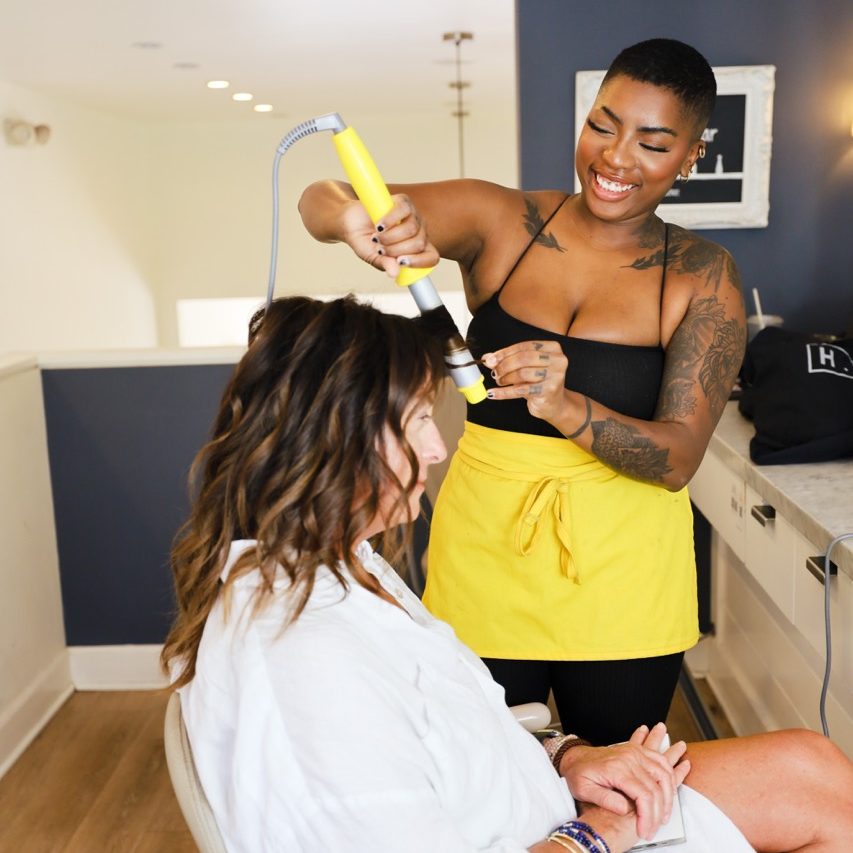
Conclusion
In conclusion, managing finances effectively as a hairstylist is essential for long-term success and financial stability. By implementing the strategies discussed in this blog post, such as setting financial goals, creating a budget, separating personal and business finances, saving for taxes, managing debt wisely, building an emergency fund, investing in professional development, and seeking professional advice, you can take control of your financial situation and pave the way for a prosperous career.
Remember that financial management is an ongoing process that requires discipline, consistency, and adaptability. Regularly review and adjust your financial strategies as your income, expenses, and goals change over time. By staying proactive and informed about your finances, you can make sound financial decisions and position yourself for financial growth and security.
Take the time to educate yourself about financial best practices, seek guidance from professionals, and utilize the tools and resources available to you. Building a strong financial foundation not only benefits your personal and professional life but also allows you to navigate economic challenges and seize new opportunities with confidence.
By managing your finances effectively, you can achieve your financial goals, build a thriving business, and enjoy the rewards of your hard work and talent as a hairstylist. Embrace the power of financial management, and let it be a catalyst for your continued success and fulfillment in the hair industry.
Fortunately, with BeautyTrak, beauty professionals can take advantage of our flagship course. We’ve partnered with Florida Agricultural and Mechanical University (FAMU) to help grow beauty pros businesses into six-figure empires. BeautyTrak provides opportunities for beauty professionals to learn, connect, and grow in the industry. So why wait? Start now and find out more ways BeautyTrak can help you get paid and achieve your career goals in the hair industry.
Just click the link below to learn more and enroll in our flagship program, Starting a Six-Figure Beauty Business.
More Blogs
- Top 10 Tips on Organizing Your Salon
- 9 Easy Ways to Increase Your Income as a Beauty Professional
- The Art of Balancing Creativity and Business in the Hair Industry
- How to Embrace Your Entrepreneurial Spirit as a Beauty Professional
- How to Open a Salon in a New City
Proudly powered by WordPress
Proudly powered by WordPress
The Benefits of Having a Mentor in the Hair Industry
Reading Time: 12 minutesNurturing Growth and Success
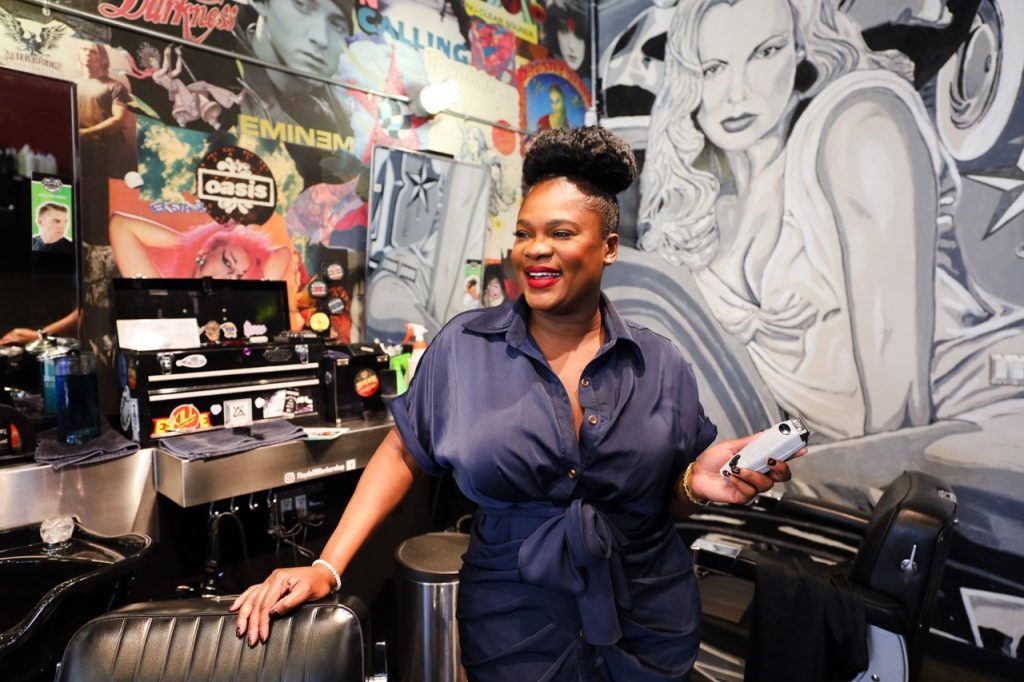
The hair industry is a vibrant and competitive field that requires skill, creativity, and business acumen. As a hair stylist, you strive to stay ahead of the trends, perfect your techniques, and build a successful career. While your passion and dedication are crucial, having a mentor by your side can greatly enhance your journey. A mentor is an experienced professional who serves as a guide, advisor, and supporter, offering valuable insights and helping you navigate the challenges and opportunities in the industry. In this blog, we will explore the significant benefits of having a mentor in the hair industry and how their guidance can contribute to your personal and professional growth. Whether you’re just starting out or seeking to advance your career, embracing the wisdom and guidance of a mentor can be a game-changer. Let’s delve into the advantages and discover how a mentor can propel you toward success in the dynamic world of hair styling.
Guidance and Support
One of the primary benefits of having a mentor in the hair industry is the invaluable guidance and support they provide throughout your career journey. A mentor is someone who has already walked the path you aspire to follow and can offer valuable insights based on their own experiences. They understand the nuances of the industry, the challenges you may encounter, and the strategies for overcoming them.
Your mentor can provide a fresh perspective on your work, offering constructive feedback and helping you identify areas for improvement. They can guide you in honing your technical skills, refining your techniques, and mastering new trends. With their expertise, they can help you navigate complex situations, such as difficult clients or career transitions, providing you with the tools and strategies to handle them effectively.
Beyond technical guidance, mentors also offer emotional support. The hair industry can be demanding, and it’s not uncommon to face moments of self-doubt or uncertainty. A mentor serves as a reliable source of encouragement, motivation, and reassurance. They understand the ups and downs of the profession and can provide guidance to help you maintain a positive mindset and persevere through challenges.
Having a mentor means having someone who genuinely cares about your growth and success. They will be there to listen to your concerns, offer advice, and help you navigate critical decisions. Their support extends beyond the technical aspects of hair styling and encompasses your overall personal and professional development.
With a mentor’s guidance and support, you gain the confidence to tackle new opportunities, explore uncharted territories, and reach your full potential as a hair stylist. They become a trusted advisor, someone you can turn to for guidance when faced with important career choices or when seeking new avenues for growth.
In the ever-evolving hair industry, having a mentor is like having a compass that keeps you on track and aligned with your goals. Their wisdom and experience can save you time, effort, and potential mistakes as you navigate your career path. Embracing the guidance and support of a mentor not only accelerates your learning but also provides a sense of reassurance and stability as you pursue your dreams.
Whether you’re seeking to refine your skills, grow your clientele, or take your career to new heights, having a mentor in the hair industry is a valuable asset. They are invested in your success and can help you navigate the challenges and capitalize on the opportunities that come your way. So, embrace the guidance and support of a mentor, and let their wisdom propel you towards a fulfilling and prosperous career in the hair industry.
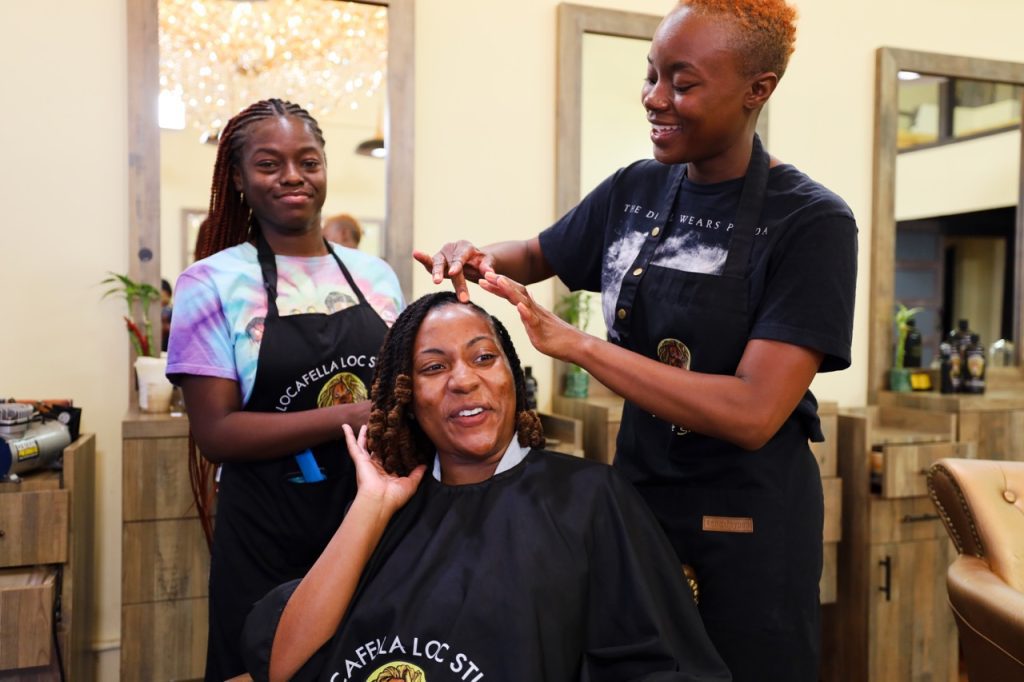
Skill Development
Another significant benefit of having a mentor in the hair industry is the opportunity for skill development. A mentor is an experienced professional who has honed their craft over the years and possesses a wealth of knowledge and expertise. They can provide personalized guidance, share advanced techniques, and help you refine your skills.
Your mentor can offer insights into the latest trends, innovative styles, and cutting-edge techniques that are shaping the industry. They can introduce you to new products, tools, and technologies that can enhance your work and elevate your skill set. By learning from their experiences and observing their techniques, you gain valuable insights that can accelerate your growth as a hairstylist.
Mentors often have a keen eye for detail and can provide constructive feedback on your work. They can point out areas where you excel and offer suggestions for improvement. This personalized feedback is invaluable as it allows you to fine-tune your skills, correct any shortcomings, and continuously strive for excellence.
Moreover, mentors can serve as a source of inspiration and motivation. They can share their own success stories, challenges they have overcome, and the lessons they have learned along the way. Their stories can ignite your passion, push you to explore new possibilities, and inspire you to push beyond your limits.
As you continue to develop your skills under the guidance of a mentor, you’ll notice your confidence grow. Their mentorship can empower you to take on more challenging projects, experiment with new styles, and explore your creativity. With each new skill you acquire and refine, you become a more versatile and sought-after hair stylist.
In addition to technical skills, mentors can also help you develop essential soft skills. They can provide guidance on effective communication with clients, building rapport, and delivering exceptional customer service. These skills are vital in creating a positive and satisfying client experience, which can lead to client loyalty and positive word-of-mouth referrals.
By actively engaging with your mentor and taking advantage of their expertise, you’ll continuously evolve and improve as a hairstylist. With their guidance and support, you’ll develop a strong foundation of skills and techniques that set you apart in the industry. This continuous skill development not only enhances your capabilities but also boosts your confidence and credibility as a professional.
Remember, skill development is a lifelong journey, and having a mentor ensures that you’re on the right path. Their guidance, knowledge, and experience can be instrumental in shaping your career trajectory and helping you become the best version of yourself as a hairstylist. Embrace the opportunity to learn from a mentor, and watch as your skills flourish, opening doors to new opportunities and achievements in the hair industry.

Networking Opportunities
One of the often overlooked benefits of having a mentor in the hair industry is the access to valuable networking opportunities. Mentors are well-established professionals with extensive networks of industry contacts, colleagues, and influential figures. Through your mentor’s connections, you gain exposure to a wider community of professionals and potential collaborators.
Attending industry events, workshops, and conferences alongside your mentor provides you with the chance to meet and connect with other hair stylists, salon owners, industry leaders, and even potential clients. These networking opportunities open doors to new collaborations, partnerships, and mentorship possibilities beyond your immediate circle.
By participating in networking events, you expand your professional network and establish relationships with individuals who share your passion for the hair industry. These connections can lead to new opportunities, such as collaborations on photo shoots, fashion shows, or even salon ownership ventures. Your mentor can introduce you to key individuals, make introductions, and provide valuable recommendations, enhancing your professional reputation and visibility within the industry.
Networking also exposes you to different perspectives, innovative ideas, and industry trends. Engaging with like-minded professionals allows you to stay updated on the latest techniques, products, and industry developments. By cultivating relationships with others in the field, you can exchange knowledge, share experiences, and learn from their successes and challenges. This collective wisdom can inspire you, broaden your horizons, and fuel your creative drive.
In addition to traditional networking events, social media platforms have become powerful tools for expanding your professional network. Your mentor can guide you in leveraging these platforms to connect with fellow hair stylists, industry influencers, and potential clients. Building a strong online presence and engaging with the hair community on platforms like Instagram, Facebook, and LinkedIn can significantly expand your reach and visibility.
Having a mentor who is well-connected in the industry can provide you with recommendations and endorsements that carry weight and credibility. When your mentor introduces you to their contacts, it adds a level of trust and opens doors that may have been otherwise inaccessible. These networking opportunities can fast-track your career growth, expose you to exciting projects, and position you as a respected professional in the hair industry.
Remember, networking is not just about what you can gain but also what you can contribute. Be open to sharing your knowledge, supporting others in their journey, and collaborating on projects. By nurturing these relationships, you build a strong network of professionals who can support and inspire you throughout your career.
In conclusion, having a mentor in the hair industry not only provides guidance, skill development, and emotional support but also grants you access to valuable networking opportunities. Through your mentor’s connections, you can expand your professional network, forge meaningful relationships, and open doors to exciting collaborations and ventures. Embrace these networking opportunities, actively engage with industry professionals, and watch how your connections and opportunities multiply, propelling you toward a successful and fulfilling career in the hair industry.

Career Advancement
Another significant benefit of having a mentor in the hair industry is the potential for career advancement. Mentors can offer valuable guidance and insights on how to navigate the industry, seize opportunities, and progress in your career.
With their wealth of experience, mentors can provide advice on setting and achieving career goals. They can help you identify your strengths, weaknesses, and areas for growth. By understanding your unique skill set, they can guide you toward opportunities that align with your career aspirations.
Mentors can also provide guidance on how to advance within your current workplace or seek new opportunities. They can offer insights on building a strong portfolio, updating your resume, and preparing for job interviews. Their expertise can help you showcase your talents and stand out in a competitive job market.
Furthermore, mentors can introduce you to industry professionals and influential figures who can facilitate career growth. They may recommend you for prestigious projects, connect you with potential employers, or serve as references for job applications. Their endorsements and recommendations carry weight and can significantly enhance your chances of success.
Beyond the technical aspects of the profession, mentors can also guide you in developing essential soft skills necessary for career advancement. They can help you enhance your communication skills, build confidence, and navigate workplace dynamics. These skills are vital for building professional relationships, leading teams, and effectively managing client interactions.
Additionally, mentors can share valuable insights on industry trends, emerging technologies, and evolving consumer preferences. Staying updated on these developments is crucial for remaining competitive and relevant in the hair industry. By staying connected with your mentor, you can gain insights into the changing landscape and adapt your skills and services accordingly.
Mentors can also provide guidance on professional development opportunities such as workshops, seminars, and certifications. They can recommend specific courses or training programs that align with your career goals and help you acquire new skills or expand your expertise. Taking advantage of such opportunities not only enhances your knowledge but also demonstrates your commitment to growth and continuous learning.
In conclusion, having a mentor in the hair industry can significantly contribute to your career advancement. Mentors provide guidance on setting goals, offer insights on job search strategies, and connect you with influential professionals. They help you develop essential soft skills and stay updated on industry trends. By actively engaging with your mentor and leveraging their expertise, you can propel your career forward, seize new opportunities, and achieve your professional aspirations in the dynamic and ever-evolving hair industry.
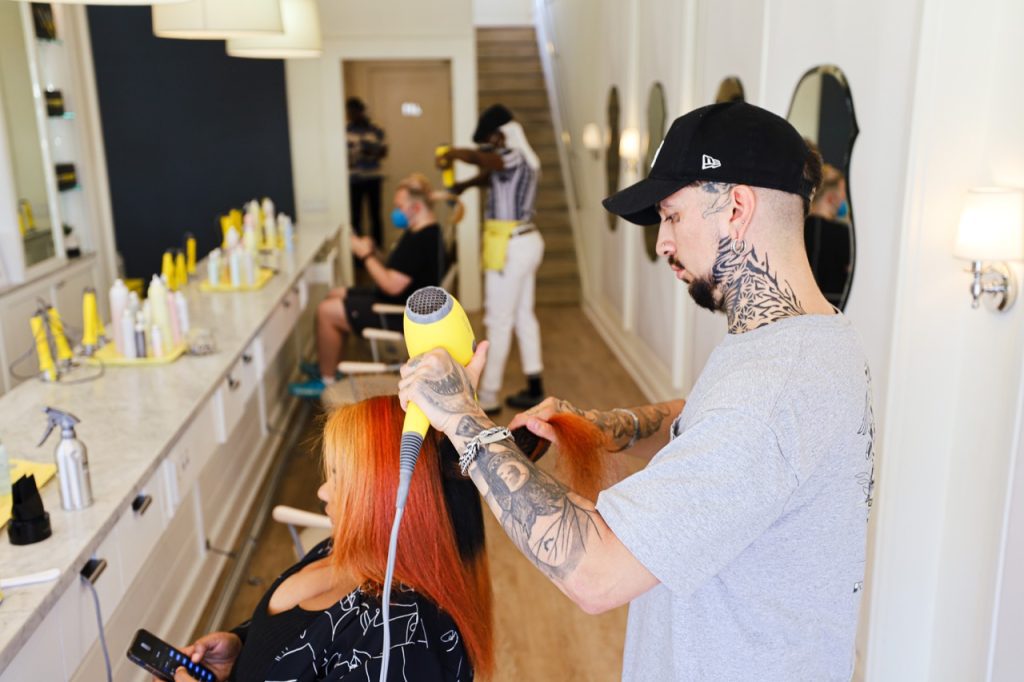
Personal and Professional Development
One of the key benefits of having a mentor in the hair industry is the opportunity for personal and professional growth. Mentors play a vital role in helping you develop both as an individual and as a professional hair stylist.
On a personal level, mentors can provide valuable guidance and support to help you overcome challenges, build self-confidence, and develop a positive mindset. They can share their own experiences, offer encouragement, and provide constructive feedback to help you grow personally. Mentors can help you identify your strengths and areas for improvement, and they can guide you in setting personal development goals.
Mentors can also assist you in honing your professional skills and expanding your knowledge base. They can offer specific guidance on techniques, product knowledge, and industry best practices. By learning from their expertise and experience, you can enhance your technical skills, stay updated with the latest trends, and deliver exceptional services to your clients.
Additionally, mentors can provide insights into the business side of the hair industry. They can help you understand salon management, marketing strategies, and financial considerations. Mentors who have successfully navigated the industry can offer valuable advice on building a client base, pricing your services, and managing your time effectively.
Furthermore, mentors can offer perspective and help you gain a deeper understanding of the industry as a whole. They can share insights into the history of the hair industry, its current state, and future trends. This broader perspective can help you develop a strong foundation and adapt to changes in the industry.
Mentors can also serve as role models, inspiring you to strive for excellence and push beyond your comfort zone. Their success stories and achievements can motivate you to set higher goals and pursue your dreams with determination. Their guidance and support can instill a sense of accountability, encouraging you to take ownership of your professional development.
Moreover, mentors can provide valuable connections to other professionals in the industry. They can introduce you to influential individuals, facilitate collaborations, and recommend opportunities for growth. Building a network of like-minded professionals and establishing relationships with industry leaders can open doors to new possibilities and pave the way for future success.
In conclusion, having a mentor in the hair industry offers significant opportunities for personal and professional development. Mentors provide guidance, support, and constructive feedback to help you grow personally and enhance your professional skills. They offer insights into the industry, assist in business strategies, and inspire you to reach your full potential. By actively engaging with your mentor and leveraging their expertise, you can embark on a journey of continuous growth, both personally and professionally, in the dynamic and rewarding hair industry.
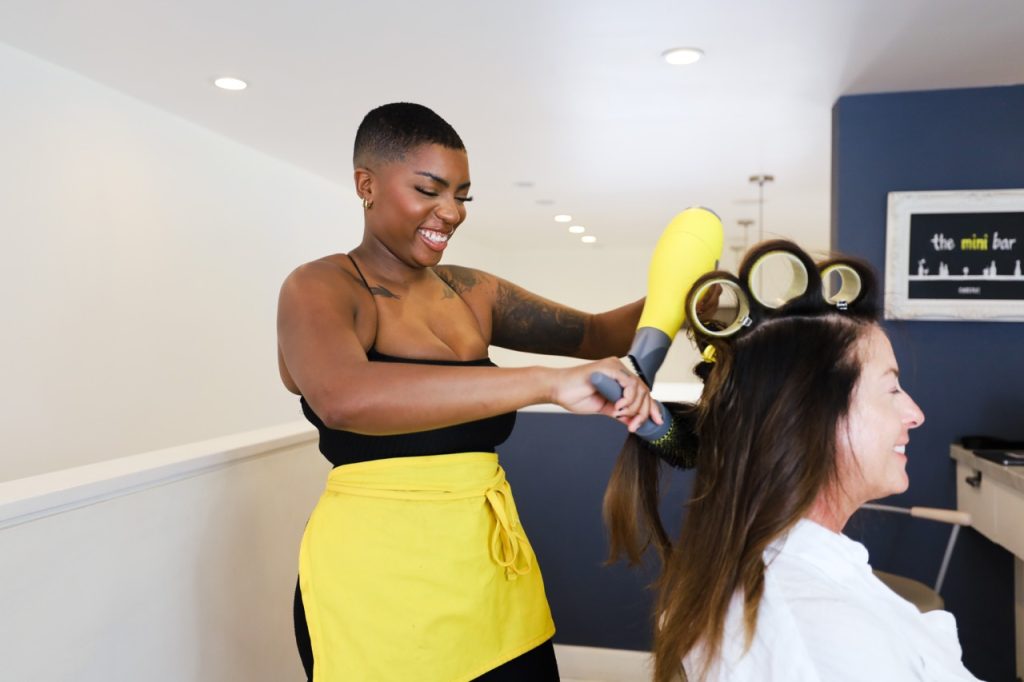
Emotional Support
In addition to practical guidance and professional development opportunities, mentors in the hair industry also provide invaluable emotional support. The nature of the hair industry can be demanding, and having a mentor by your side can help you navigate the highs and lows of your career with greater resilience.
Mentors understand the unique challenges and pressures that hair stylists face. They have likely encountered similar situations and can offer empathy, understanding, and a listening ear. Whether it’s dealing with difficult clients, managing work-life balance, or coping with the demands of a fast-paced environment, mentors can provide emotional support and guidance.
During times of uncertainty or self-doubt, mentors can offer reassurance and encouragement. They can help you overcome self-limiting beliefs and provide a fresh perspective on challenges you may encounter. Their belief in your abilities can boost your confidence and motivate you to overcome obstacles and pursue your goals with determination.
Mentors also play a crucial role in helping you manage stress and prevent burnout. They can share strategies for self-care, work-life balance, and maintaining overall well-being. By prioritizing self-care and seeking support from your mentor, you can cultivate a healthier mindset and maintain your passion and enthusiasm for the hair industry.
Moreover, mentors can provide a safe space for you to express your thoughts, concerns, and aspirations. They can offer guidance on personal development, relationships, and maintaining a positive mindset. Through open and honest conversations, mentors can help you develop a strong sense of self-awareness, emotional intelligence, and resilience.
The bond between a mentor and mentee goes beyond professional guidance. Mentors often become trusted confidants and advocates who genuinely care about your well-being and success. They celebrate your achievements, offer encouragement during setbacks, and provide a sense of belonging in an industry that can sometimes feel competitive or isolating.
Having a mentor who offers emotional support creates a nurturing and uplifting environment where you can thrive both personally and professionally. The mentor-mentee relationship fosters a sense of camaraderie, trust, and mutual respect. Knowing that you have someone in your corner, rooting for your success and providing emotional support, can make all the difference in your journey as a hairstylist.
In conclusion, the benefits of having a mentor in the hair industry extend beyond practical and professional aspects. Mentors offer emotional support, understanding, and guidance to help you navigate the challenges of your career. Their empathy, encouragement, and wisdom create a supportive environment that fosters personal growth and resilience. By embracing the emotional support provided by mentors, you can cultivate a healthy mindset, manage stress, and thrive in your journey as a hairstylist.

Conclusion
In conclusion, having a mentor in the hair industry is a transformative experience that offers numerous benefits. From guidance and support to skill development, networking opportunities, career advancement, personal and professional development, and emotional support, mentors play a pivotal role in shaping your journey as a hairstylist.
A mentor not only provides valuable insights and knowledge but also serves as a source of inspiration, motivation, and encouragement. They help you embrace your creative vision, understand your clients’ needs, develop strong business skills, set clear goals, manage your time effectively, collaborate with peers, adapt to industry trends, and nurture your passion for the craft.
Furthermore, mentors offer emotional support, understanding, and a safe space to share your concerns, aspirations, and challenges. Their wisdom, empathy, and guidance help you navigate the ups and downs of the hair industry with resilience and confidence.
By actively engaging with your mentor and leveraging their expertise, you can fast-track your professional growth, expand your network, gain industry knowledge, and unlock new opportunities. A mentor’s guidance can help you overcome obstacles, learn from their experiences, and avoid common pitfalls, ultimately saving you time and energy on your journey.
Remember, finding a mentor is a two-way street. It requires open communication, trust, and a commitment to continuous learning. Seek out mentors who align with your values, goals, and aspirations. Be proactive in seeking their guidance, actively listen to their advice, and apply it in your practice.
Whether you’re just starting your career in the hair industry or looking to take your skills to the next level, having a mentor can make a significant difference. Embrace the power of mentorship, seize the opportunities it brings, and embrace the transformative journey that awaits you.
In the dynamic and ever-evolving hair industry, having a mentor by your side can be the catalyst for your success. So, don’t hesitate to seek out a mentor, invest in this invaluable relationship, and let their guidance propel you toward achieving your full potential as a hairstylist.
Fortunately, with BeautyTrak, beauty professionals can take advantage of our flagship course. We’ve partnered with Florida Agricultural and Mechanical University (FAMU) to help grow beauty pros businesses into six-figure empires. BeautyTrak provides opportunities for beauty professionals to learn, connect, and grow in the industry. So why wait? Start now and find out more ways BeautyTrak can help you get paid and achieve your career goals in the hair industry.
Just click the link below to learn more and enroll in our flagship program, Starting a Six-Figure Beauty Business.
More Blogs
- Top 10 Tips on Organizing Your Salon
- 9 Easy Ways to Increase Your Income as a Beauty Professional
- The Art of Balancing Creativity and Business in the Hair Industry
- How to Embrace Your Entrepreneurial Spirit as a Beauty Professional
- How to Open a Salon in a New City
Proudly powered by WordPress
Proudly powered by WordPress
How Inflation is Affecting Your Beauty Business
Reading Time: 4 minutesStay prepared in these unprecedented times
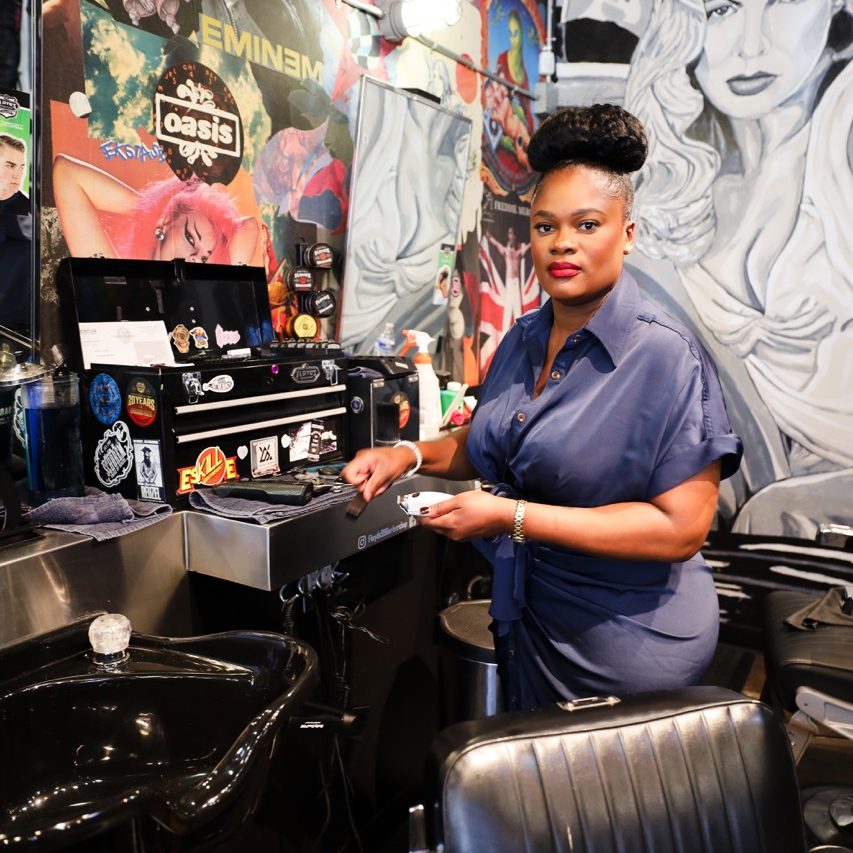
In the month of September 2022, the US Inflation Rate was at 8.26%, compared to 8.52% the previous month and 5.25% last year. This is higher than the long-term average of 3.26%.
While we can’t control the economy, we can certainly control how we react and prepare for rising inflation rates.
Is inflation affecting you as a beauty professional? Let’s find out in this article.
What is inflation?
Before we dive into how inflation affects your beauty business, let’s discuss what inflation actually is.
Inflation determines how expensive consumer goods and services fluctuate over a period of time. Usually, inflation is adjusted and increases yearly. This typically reflects the cost of living in a particular area like a country. It can also represent the change in raw goods and materials which, in turn, affects consumer goods and services.
As the supply of money increases and grows too much relative to the size of the country’s economy, the value of currency decreases. As that decreases, the price of consumer goods and services increases and thus continues the cycle of inflation.
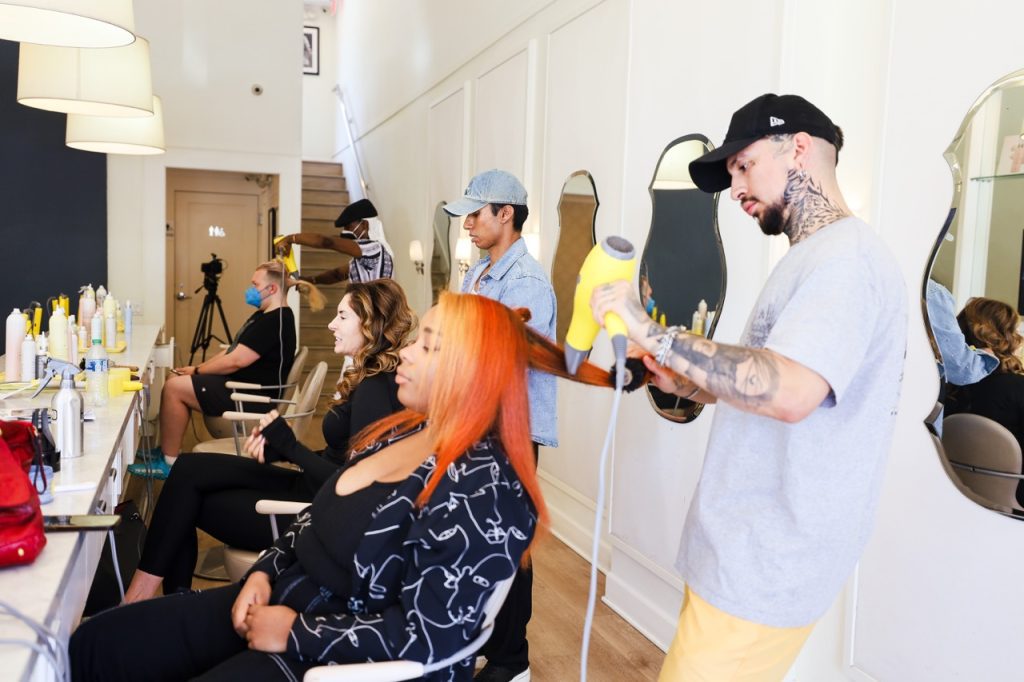
How Does Inflation Affect the Beauty Industry?
It seems like there is just no letting up in this game called life. As beauty professionals just started to recuperate from the effects of COVID-19, now they are battling a new economic crisis–inflation.
Inflation has caused a price hike across all the supply chains. As a service provider, you probably use a variety of products to achieve your clients’ dream results. Unfortunately, with the rise of pricing from sourcing raw materials and transporting goods, there will be an increase in product costs. This could mean trouble for beauty professionals who are already living paycheck to paycheck and having difficulty making ends meet. A slight rise in prices could throw off your cash flow if you’re not keeping up with your budget.
According to a 2021 Business.org survey, 89% of small business owners have increased prices since the start of the pandemic. From those surveyed, 45% raised prices by more than 20% in 2021 and 46% are planning on reducing their inventory in 2022 to combat inflation.
Let’s discuss a few ways inflation could impact your beauty business.
Consumer Behaviors Change
Inflation has not only affected consumer goods but consumer spending as well. With an industry like beauty, most people see it as nonessential and cut out beauty products and services in times of uncertainty. The general demographic tends to prioritize needs like rent, mortgages, gas, and groceries over discretionary spending.
However, some beauty companies happen to rise above this current trend. Many beauty companies are still seeing an increase in sales and have reported that inflation has had no impact on consumers’ beauty consumption.
Since we are still in the beginning stages of unprecedented times, we do not know what the future will hold for beauty. With signs of a recession underway, sales may begin to decline in the coming months so beauty professionals should keep monitoring their cash flow.
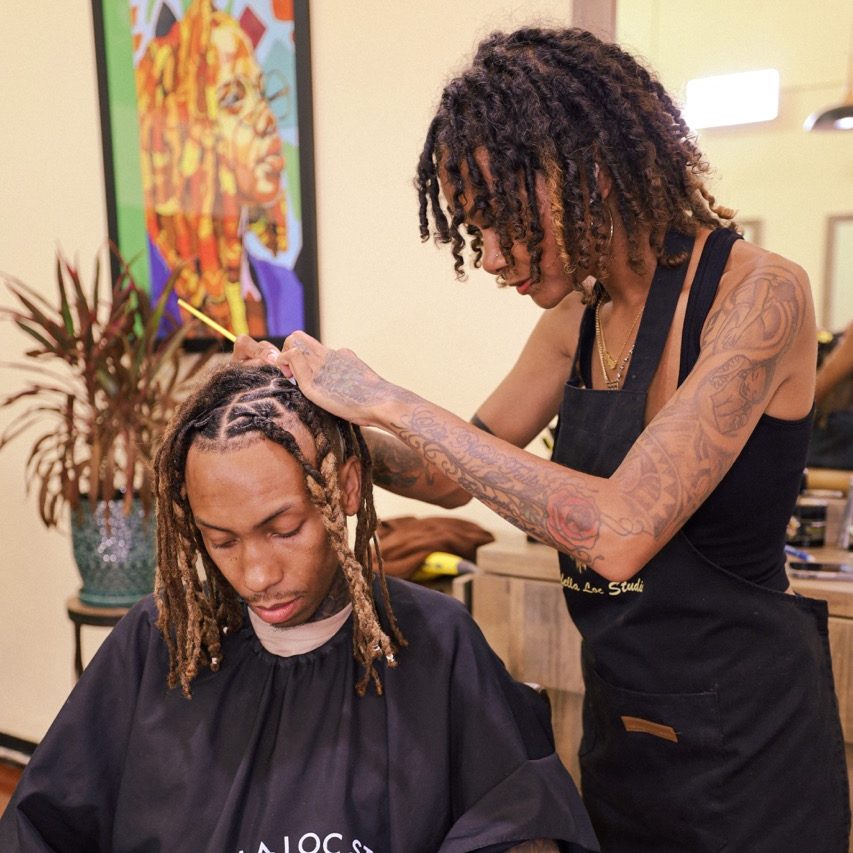
Narrower Profit Margins
If you choose to not increase your prices to accommodate rising inflation rates, then expect narrower margins. Ultimately, you will be making less as a beauty professional with the rising costs of raw materials and transportation. Consider finding opportunities to marginally increase prices to reflect current inflation rates.
Also, consider adjusting your current inventory to save on costs. Try ordering a low quantity when you restock on products and keep only the necessary ones.
Lastly, consider buying products for your salon or beauty business locally. This might cut some transportation costs and increase your profit margins during times of increased inflation.
Conclusion
Inflation and unprecedented times can be daunting. But if you want to stay afloat during these uncertain times, study beauty businesses that thrived during the pandemic and recession.
One of the ways they managed to beat the trend was by keeping an eye on their cash flow and adjusting accordingly. As a service provider, how good are you at staying on top of your revenue? Do you notice slight deviations or are you still living in survival mode?
Consider updating your systems and automating data solutions. Or think about hiring an accountant to do your bookkeeping. This way you have time to enjoy your craft and less time worrying about how inflation is affecting your cash flow.
There are many things to consider, but BeautyTrak can help you to make the most effective choice as a beauty professional. We partnered with Florida Agricultural and Mechanical University (FAMU) to help you grow your business into a six-figure beauty empire through our membership program.
Find out more ways BeautyTrak can help you get paid.
Click the link below to enroll in our membership program:
More Blogs
- Top 10 Tips on Organizing Your Salon
- 9 Easy Ways to Increase Your Income as a Beauty Professional
- The Art of Balancing Creativity and Business in the Hair Industry
- How to Embrace Your Entrepreneurial Spirit as a Beauty Professional
- How to Open a Salon in a New City
Proudly powered by WordPress
Proudly powered by WordPress
9 Ways You Know You’re Not Making Enough as a Beauty Professional
Reading Time: 9 minutesThis list may surprise you

“There is a difference between being poor and being broke. Broke is temporary. Poor is eternal.”
Robert T. Kiyosaki (Author of Rich Dad, Poor Dad)
Everyone experiences financial difficulties from time to time. That’s life, especially as a beauty professional.
The beauty industry can be rewarding, but it’s also volatile. Since you’re probably self-employed, it can be difficult to get enough clients in your seat to reach your quota. You probably knew how much a cosmetologist makes on average when you entered the industry, but you still decided to jump in and pursue your passion.
The job itself is great but not if you find yourself in a perpetual state of poverty. If that’s the case, then you might not be making enough as a beauty professional.
Let’s discuss ten markers that show your income is not able to support you.
1. Drowning in Debt
The first way you know you’re not making enough as a beauty professional is if you are drowning in debt. If you are scared to look at your bills because of the overwhelming debt you have incurred, then this is a big sign of poverty.
Unfortunately, many struggling beauty professionals depend on loans to help them get by. You know you’re not making enough money if you don’t have the savings to pay for a car full price.
Since your car is depreciating as soon as you drive off the lot, it becomes more financially draining to maintain. Gas and upkeep alongside your car payment can begin to burn a hole in your pocket.
There are too many beauty professionals who are flaunting expensive purchases they can’t pay for. They might buy pricey phones that they would not have been able to afford at full price if they didn’t accept a payment plan. That extra bill is added to your monthly expenses.
Many people who struggle with a poverty mindset opt to pay for things in installments and even accrue interest when they can pay for things upfront. Fear of the future causes this debilitating cycle. For the buyer, it is less intimidating to pay in small installments, even if it costs more in the long run than to pay for a huge lump sum.
And lastly, service providers who are drowning in debt are more than likely only paying the minimum on the debt.
Using credit cards to pay off essential purchases can lead to an increment of high interest. In the end, you end up paying more on the actual interest than on the purchases themselves. If you can’t afford to pay off your debt, then it’s probably a clear sign you aren’t making enough as a beauty professional.

2. Depending on credit
As we previously alluded to, constantly depending on credit is a surefire sign that your cosmetology degree isn’t paying off.
Credit cards are like a double-edged sword. On the one hand, they offer assistance and can build up your credit score to receive certain benefits and credit rewards. On the other hand, if used irresponsibly, they become a dangerous trap of credit card debt.
If you find yourself depending on credit cards to meet your daily expenses, you probably aren’t making enough, or managing your money properly, as a beauty professional. Even worse is if you can only afford the minimum dues every month. The interest continues to roll over every month, leaving you stuck – and poor. And if you have multiple credit cards and loans piling up, it’s time to really address your financial situation.
Take this example. Let’s say you want to buy a large purchase that’s one thousand dollars. Instead of paying it in full, you charge it to your credit card and pay monthly installments. The total price plus interest would be more than you bargained for.
Now, if you use credit cards and can pay them off every month, that’s fine. But if you don’t have at least up to six months of savings, you’re in trouble. What happens if you have an emergency, lose your job, or, God forbid, you’re hospitalized? If you’re only working from credit and not liquid savings, that’s a recipe for disaster. If you haven’t been able to build an emergency fund from your income, this could be a big indicator that you’re not making enough as a service provider.
So, credit cards cannot supplement your income. They shouldn’t be used in times of emergencies or to buy essentials like food. If you find yourself reaching for your credit card at the end of each month because you’ve run out of liquid cash, you’re not making enough money as a beauty professional.
3. Living paycheck to paycheck
Do you find yourself looking to the left and right at the beginning of the month? Are you constantly scrambling to make ends meet? This is a warning sign that you aren’t making enough money.
If you’ve run out of money after you’ve paid your bills, you’re heading for a financial disaster. If you’re hit with an unexpected expense, what will you do?
If we assume that you’re not living out of your means in a fancy high rise or leasing a luxury car, you should be making enough money to cover your basic expenses. But if you are finding it difficult to save money with your current income, you probably want to revisit your financial situation.
You shouldn’t be struggling to decide if you can pay for rent or a car payment every month. If your income can’t support necessary expenses such as gas, water, electric , or healthcare, then you have to make a change quickly. Avoiding tackling these issues will keep you in a cycle of poverty.

4. Only living on necessities
There is nothing wrong with humble beginnings. Everyone has to start somewhere. Even you, as a beauty professional. But do you find yourself living humbly even though you’ve been servicing clients for years? Where is the reward? Where is the fruit?
If you’ve already trimmed away all the unnecessary monthly expenses and bills, you’re living on a bare-bones budget. If you find yourself only using your money to pay bills and necessities, you’ll quickly grow weary and resentful of the job that used to bring you so much joy.
Does any of the following sounds like you?
You don’t have a gym membership.
You cannot afford to eat out even occasionally.
You turn off the air conditioner during the summer months and rely solely on fans to keep you cool.
You don’t have any streaming or entertainment services.
On the surface level, it may seem like you’re being frugal and you’re good with money. But on a deeper level, you know you can’t afford to expand your budget in this place of your life. Such a tight budget cannot sustain you in the long run.
Living this way for a long time starts to affect your mindset and the way you see yourself. Even when you could afford to spend a little more on yourself, you avoid it out of fear of the future. You could spend a bit more on healthier and luxury options but you will continue to keep yourself small. Not making enough money can negatively affect the way you see yourself.
5. No savings/emergency fund
Having a low income may prompt you to desire to save money but unfortunately, you don’t have the means to build up any savings.
If you have a shoestring budget and you are constantly stretched financially, building up an emergency savings fund could feel like an impossible task. You might feel like you don’t even have enough to pay for essentials, let alone build up a savings fund. If that sounds like you, you have to increase your salary as a beauty professional.
When you’re living on a bare-bones budget, you cannot handle life emergencies like car accidents, job loss, or illness. If you have no emergency savings, you might resort to using credit cards and loans and dig yourself into a deeper financial hole with no means of hope. Or even worse: You might have to constantly and embarrassingly ask for money from family and friends.
Building up an emergency savings fund is so crucial because it helps you prepare for unexpected financial challenges. To never expect something to pop up is naive at best.
Think about your current situation. Let’s say you are a master barber and for some reason had to stop barbering. Would you be able to survive for three months? How about six months? If you feel uncomfortable answering that question, you have to assess your impoverished situation.
6. Government assistance
Many people rely on the government to sustain them. If it weren’t for some programs, many groups of people would be destitute.
If you find yourself banking on the government or newly elected officials to enhance your standard of living, then you’re in for a rude awakening. The moment you start to rely on someone else to change your life, you’ve already lost. No one can improve your life but you.
Constantly expecting others to take care of your financial situation shows that you don’t make enough income as a service provider.

7. Gambling
Gambling and lotteries can be a fun, occasional hobby for people who are financially stable. Perhaps someone visits Las Vegas and budgets a few hundred dollars for entertainment. Nothing wrong with that. The problem arises when you’re in a real financial crisis and you’re hoping for a miracle.
Gambling and playing the lotto are completely irrational and unrealistic forms of augmenting your income. You end up losing more money than you gain and thus spiral into a trap of destitution.
8. Hoarding
Most poor people would not see themselves as hoarders. They would use a euphemism and say they are being “resourceful,” but that’s not always the case.
Let’s say you’re a hairstylist and you’re living on an average hair stylist’s income. You might try to extend the life of different items past their shelf life to avoid throwing them away. So you might find yourself buying a simple dress from the store. Once you’re unable to wear it out anymore, you start wearing it home for loungewear. Then it starts to fall apart and you use the dress as a wash rag. You keep using the dress until it disintegrates into threads. This is a problem. Although it’s resourceful, why not just discard it and buy something you genuinely enjoy? And not just something you refuse to throw away.
Other examples of hoarding include buying multiple of the same products, holding on to broken tech, and diluting shampoo and soap until it becomes ineffective.
If you find yourself doing any of the aforementioned, you know you’re making way too little as a beauty professional.
9. DIY
Alongside hoarding, many low-paying service providers try to do everything themselves. For example, they may have learned how to do repairs, fix their car issues, change locks, you name it. Many of them even started their own businesses because they learned how to do beauty themselves. They may have grown up in situations where they had to learn how to style their own hair, give themselves a haircut, or do their own nails.
Although this can be very resourceful from time to time, it is not a wise financial strategy to always do things yourself to save money. Not only can you be wasting time (which you can never get back), but you could also be wasting resources or making the problem worse. Especially when certain jobs are specialized and need a professional.
For example, a lot of low-income people avoid seeing health professionals when they need to. They avoid seeing a doctor and try to prescribe remedies for themselves, like tea to soothe the pain, instead of having the pain professionally diagnosed by a healthcare professional. Unfortunately, the issue could become worse, and even life-threatening, if it isn’t caught sooner.
You know you’re not making enough when you don’t see your health as valuable. If you shirk going to the dentist when you have a cavity or avoid calling off sick from the salon when you really need to, then something has to change in your financial situation.
Conclusion
Surviving on a minimal income is no way to live at all. Not making enough money can take a toll on your mental and emotional health as well as negatively impact the way you see yourself.
Are you making as much as you should? No? Then start earning more right now.
BeautyTrak will help you make the most effective choices as a beauty professional. We provide easy-to-follow, step-by-step guides and personalized mentorship to help you take control of your business, maximize your profits, and start living the life you want.
We partnered with Florida Agricultural and Mechanical University (FAMU) to help you grow your business into a six-figure beauty empire. We’ve helped others just like you, and we’ll show you how to lift yourself out of the cycle of poverty.
Click the link below to enroll in our membership program:
More Blogs
- Top 10 Tips on Organizing Your Salon
- 9 Easy Ways to Increase Your Income as a Beauty Professional
- The Art of Balancing Creativity and Business in the Hair Industry
- How to Embrace Your Entrepreneurial Spirit as a Beauty Professional
- How to Open a Salon in a New City
Proudly powered by WordPress
Proudly powered by WordPress
Why You Are Not Making Money as a Beauty Professional
Reading Time: 4 minutes6 crucial mistakes

Entrepreneurship is not for the faint of heart especially those desiring to work in the beauty industry. To make more than the average hairdresser’s salary, it takes time, patience, and character.
Unfortunately, when you research how much a cosmetologist makes, you might be surprised to find out that it’s less than a living wage on average.
Why is that? And you do find yourself in the same predicament as a service provider? Well, there are a few reasons why you’re not making money in your beauty career. Let’s find out in this article.
1. You’re too comfortable
There’s a well-known saying that says the comfort zone is a beautiful place but nothing grows there. As a beauty professional, you have to get uncomfortable and do what it takes to make good money.
For example, let’s say you’re someone who is more shy and does not like publicity. Having a temperament is one thing but letting it hinder you is another thing. To expand your beauty business and reach more clientele, you’ll have to put yourself out there. Whether that’s through marketing your brand through social media or meeting people at trade shows. You cannot be afraid of the limelight as a beauty entrepreneur.
2. Economic illiteracy
Many service providers spend so much of their time improving their skills but do not take the time to invest in economic literacy. Your skills can only get you so far and you have to be aware of how to manage money.
Without the basic tools of how to manage your resources, you are putting yourself and your business behind.
3. Lack of cash flow awareness
Most beauty entrepreneurs do not budget or keep track of their expenses. They live paycheck to paycheck and are barely making ends meet. Unfortunately, because so many beauty professionals have a survival mindset, they do not pay attention to the money coming in and out of their business. This leads to less overall income in general because you are not properly stewarding your expenses.
By tackling financial issues head-on, you create opportunities to grow and problem-solve. You might discover that you are spending too much in a certain area and decide to cut down and save money. Or you might discover there’s space in your budget to save more for something that will propel your business forward.

4. Bad time management
You could be the best hair braider on the block, but if you don’t know how to manage your time wisely, then you’re doomed as a beauty professional.
Entrepreneurship rises and falls with leadership. When you have no boss over you to ensure you’re on the right track, you have to step in and lead yourself. As the CEO of your beauty business, you have to be organized with your time in order to see some real growth in your income.
For example, you have to prioritize time to service your clients efficiently, time to research how to scale your business, and time to sharpen your skills.
5. No marketing strategy
It’s possible to have a great product and no one buys it. How? Through a lack of or bad marketing. You can’t just have great skills but not know how to sell them to your potential customers.
As the driver of your beauty career, you have to put in the time to learn how to market yourself and your gift. Consider learning how to build a strong online social media presence to attract new clients and bolster sales.
You don’t know how to create a marketing strategy
This is a tough one.

6. Lack of action
Ultimately, you’re not making money as a beauty professional because you’re afraid to take necessary action. And we don’t necessarily mean to work more hours. We’re speaking about taking the strategic steps to establish your brand and scale your business to six figures.
That takes planning and intentional effort. You can’t keep doing the same thing over and over and expect a different outcome. You have to take action and change your patterns for the better.
Conclusion
The hard truth is that you’re not making money as a beauty professional because of you. Until address what has to change within you, then your business will remain stagnant.
Fortunately, there’s a solution to scaling your beauty business and that’s through BeautyTrak’s membership program.
Click the link below to enroll:
More Blogs
- Top 10 Tips on Organizing Your Salon
- 9 Easy Ways to Increase Your Income as a Beauty Professional
- The Art of Balancing Creativity and Business in the Hair Industry
- How to Embrace Your Entrepreneurial Spirit as a Beauty Professional
- How to Open a Salon in a New City
Proudly powered by WordPress
Proudly powered by WordPress
Why Every Beauty Professional Needs to Understand Business
Reading Time: 7 minutesAvoid these mistakes at all costs

You’ve been told that your wig-making skills are incomparable. Or you’ve heard that no one can do acrylic nails as expertly as you can. Or you may have even heard that your haircuts are the sharpest in town.
But for some reason…
Your business is not moving forward.
So many beauty professionals are stuck in an endless cycle of mastering their craft but not seeing the financial results they are looking for.
One season you might be overbooked with clients; the next, you are struggling to even have someone walk through your doors. Regardless of the season, you are still underpaid and overworked.
In the U.S. alone, 18.4% of businesses fail within the first year. After five years, 49.7% have faltered, while after 10 years, 65.5% of businesses have failed.
If you’re thinking about starting your own business as a beauty professional, knowing your craft can only get you so far. You need a solid business strategy to ensure you are getting paid what you’re worth.
Here are a few avoidable mistakes beauty professionals make when they do not take the time to understand business:
1. Not having a business plan
One of the most overlooked and critical aspects of growing your own beauty business is having a solid business plan in place.
And we get it. Sometimes you’re just so excited to jump into the market because you are passionate about your craft. But not having a strategy in place can set you up for failure sooner than later.
Business is not just something you can wing and walk away a millionaire. It takes intentionality and planning to know what you’re really getting into.
Without a business plan, you risk becoming a statistic.
You risk making avoidable mistakes.
You risk having your reputation on the line.
You risk hating the very thing that gives you a sense of fulfillment.
You have to remember that you’re not just braiding hair, barbering, or running a salon. Above all else, you’re running a business. And that takes a continual effort to learn more about the industry, seek out growth opportunities, and remain a student at heart.
2. Lacking a marketing plan
One of the biggest things that will hold you back as a beauty professional is the lack of a marketing plan. Word of mouth is great but it will not get you the consistent, long-term results you may be looking for.
There was a time when salon owners could just rent out a high-traffic location or even work from home and make a great living. Unfortunately, we now live in a technological age and the beauty industry has become more competitive.
Many beauty businesses are getting left behind simply because they don’t have a website or any social presence.
In today’s world, you can’t be afraid to put yourself out there and market your brand. And you especially cannot afford to not have a marketing strategy in place.

3. Ignoring client relationships
Sure. There are many people to sell your services to and it is alluring to draw in new customers. But the truth is, new customers are going to be scared off if you don’t have good relationships with your current clients.
Many beauty professionals lack client retention skills and always seek the next best thing. Ever heard the phrase “The grass isn’t greener on the other side; it’s green where you water it?” A similar concept applies here.
When you “water” and nurture your current client base, it sets the tone for the new clients coming in.
And if you think about it, it’s more profitable as well. Having a loyal client for five years yields a greater ROI than a new client that might have come to get one service done and was never heard from again.
4. Not hiring an accountant
We know how tough it is to start your business on a shoestring budget. So to now consider the added expense of hiring an accountant might make you want to run from the business side of your beauty brand altogether.
But the truth is that hiring an accountant on your team might save you tons of money in the long run. It might seem like a hassle upfront, but you’ll thank us later once you see the benefits.
You may be wondering what a certified accountant could do for your business. For one, you don’t have to worry about investing so much time and energy in understanding taxes. If you’re trying to file taxes yourself but you’re not properly educated on the matter, then you could make some damaging mistakes to your business. And that’s the last thing we want to happen.
Another important reason you should hire an accountant is because they can handle the cash flow of your business in the most efficient way. Since an accountant is already trained in the area of money management, they can offload a lot of administrative tasks off your hands. This means more time to focus on things that really matter like client management and increasing revenue.
An accountant can not only give you some amazing financial benefits but over time the investment will pay for itself.
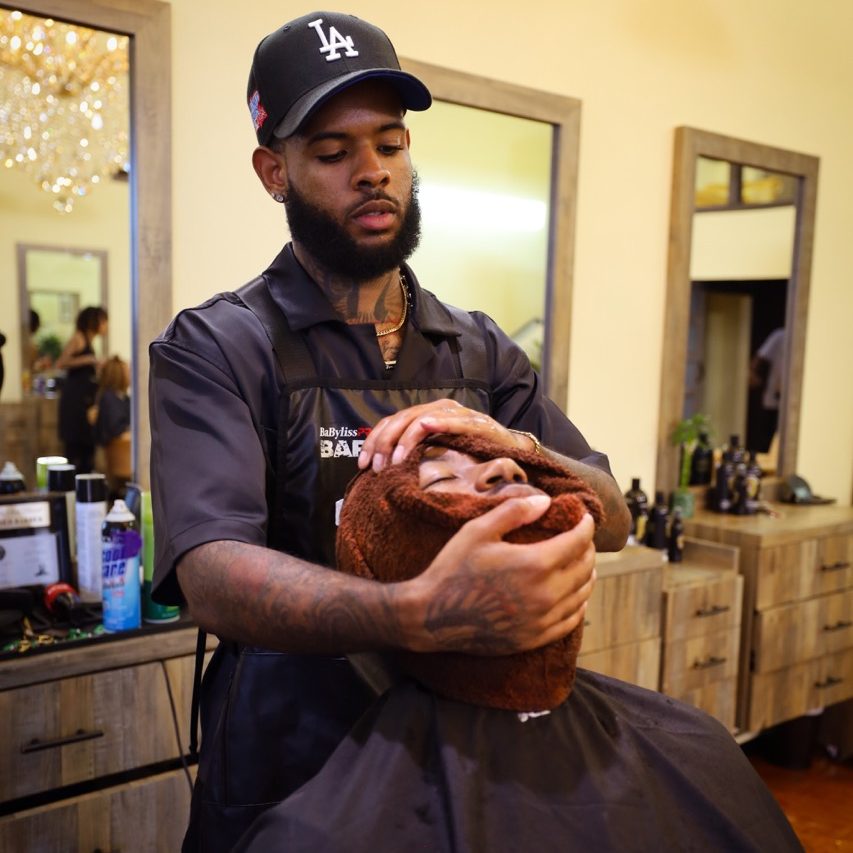
5. Wrong hiring
As a service provider, you are the CEO of your own small business. Although everyone starts at humble beginnings, you will need to grow and expand eventually.
There is a famous proverb that says, “If you want to go fast, go alone. If you want to go far, go with others.” In the context of the beauty world, your success as a beauty professional greatly depends on collaboration. You will reach a point in your career in which you just can’t do it alone anymore. You will need to hire staff that are just as capable and talented as you.
When you don’t take the time to properly vet new staff members, your business will eventually suffer. Most business owners know the pain of hiring an incompetent employee. Even worse, your clients know the frustration of dealing with an employee who is less than capable.
Your employees are a reflection of your professionalism, skills, and tenacity. If your staff doesn’t model your business’s values, then your clients will not return. You may be amazing at what you do, but your customers may not experience it.
It should bring you joy as a service provider to see your clients coming back and praising your staff for their excellent work. Client retention will be heavily dependent on you hiring the proper staff.
A huge mistake beauty professionals make when hiring is hiring from a place of desperation. You might be low on staff, but it makes a world of difference when you take the time to ensure you have the right person on board.
Having patience and doing your due diligence in the hiring process will save you a headache in the long run. Imagine if you rushed to hire the wrong person and they ended up quitting shortly afterward or if you had to fire them. You just wasted time and money onboarding and filing paperwork for someone who was not the best fit.
Also, you might run into frustrations when clients stop returning because of that one bad hire. Bad publicity and word of mouth spread quickly. It can be difficult to correct all those bad reviews and rebuild the integrity of your business. Save yourself the hassle and pick the right people who can come alongside your vision.
6. Wrong pricing
One of the biggest mistakes beautypreneurs make in business is improper or inaccurate pricing models. Many service providers guesstimate their prices without any real plan in place. The unfortunate thing about this approach is that one might think they are making good money, but when calculations are run, there could be a lot of lost money.
As a tip, you shouldn’t focus too much on what your competitors are charging. If you don’t know what they’re basing their pricing on, you shouldn’t blindly use their template. Different companies charge different prices for varying reasons. Some factors to consider when implementing prices are time, products used, skill, labor, and complexity of service.
Also, you should conduct market research on your core demographic. For example, let’s say you own a small brick-and-mortar location in a low middle-class neighborhood. The total amount your audience may be willing to pay for a service may be different than a larger more established salon in an upper-middle-class neighborhood.
Lastly, consider your skill level when establishing pricing. As you get more experienced and gain more clientele, your prices should rise to reflect your worth. This may intimidate many service providers but you don’t want to get stuck and burnt out. In order to grow your business to where you desire, you have to accurately price your services.

7. Stocking up on inventory too soon
Whether you’re a hairstylist, barber, esthetician, or cosmetologist, you will need products to do your job well and perhaps to occasionally sell to your customers. But it may be unhelpful and unresourceful to stock up on inventory too soon.
Many beauty professionals may falsely believe that they need the best and most expensive products to use and sell to clients before they can fully launch their business. This is untrue and a great hindrance starting out.
You can grow your business with a few exclusive products and purchase more as you need them. Test out which products work the best for your clients and staff then pivot from there. This is a better strategy than purchasing products you’ll never use and feeling pressured to order from manufacturers who only offer high minimum order quantity (MOQ) products.
Overstocking inventory can be a money trap in the end. It’s best to create a budget for inventory and stick to the necessities. You will always have room to grow with your business as time goes on.
Conclusion
In the end, there are so many key mistakes beauty professionals make when they don’t understand the business side of things within this industry.
The common denominator in your business growing or remaining stagnant is you. Without investing in your own professional development, you risk endangering your own brand and becoming a statistic.
It doesn’t have to be this way, though.
With BeautyTrak, we connect you with the right sources to scale your business and generate the money you’ve always dreamed of.
Click the link below to enroll in our membership program:
More Blogs
- Top 10 Tips on Organizing Your Salon
- 9 Easy Ways to Increase Your Income as a Beauty Professional
- The Art of Balancing Creativity and Business in the Hair Industry
- How to Embrace Your Entrepreneurial Spirit as a Beauty Professional
- How to Open a Salon in a New City
Proudly powered by WordPress
Proudly powered by WordPress

